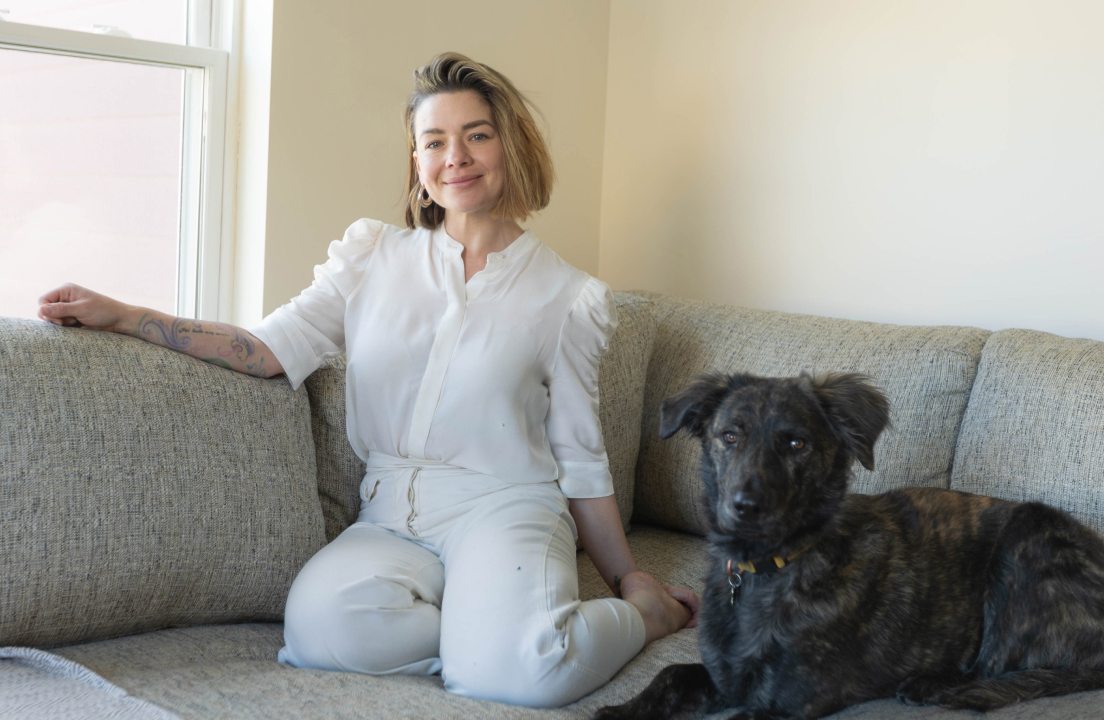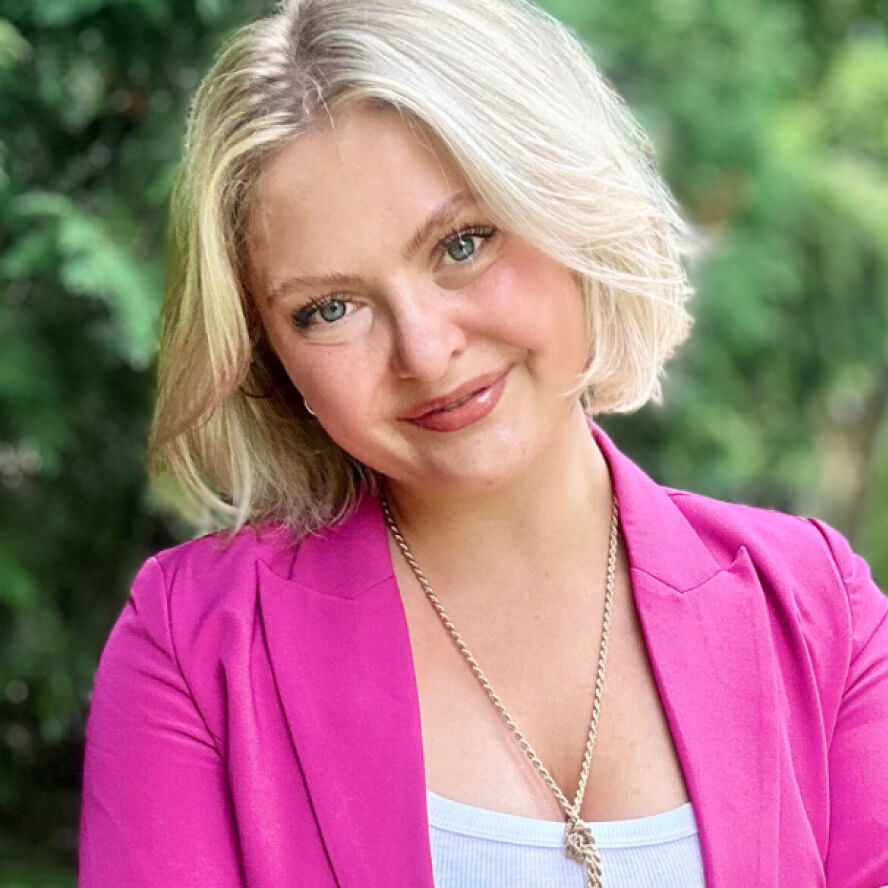T1D Guide
T1D Strong News
Personal Stories
Resources
T1D Misdiagnosis
T1D Early Detection
Research/Clinical Trials
Meet Evan Soroka, T1D Advocate and Author of Yoga Therapy for Diabetes
The mind-body practice of yoga provides numerous science-backed physical, mental, and emotional benefits. And if you have diabetes, yoga offers additional advantages by supporting blood sugar regulation, reducing stress, and enhancing nerve function. Certified yoga therapist, educator, and author Evan Soroka credits yoga with saving her life.

Here, Soroka offers a new perspective on yoga's all-encompassing healthful rewards, stressing that the most important gift of a yoga practice for people with type 1 diabetes is self-awareness and confidence.
Another offering Soroka has gained over the years is the realization that perfectionism with type 1 diabetes management is a trap and that shifting one’s mindset about diabetes can transform their relationship to it and themselves, creating more joy and in turn, improved physical and mental health outcomes.
Soroka hopes people understand that the lessons we learn from diabetes can be applied to every area of our lives. Without her diabetes diagnosis, she might not have found the practice of Yoga and embraced her current path, which is such a big part of her life. “I told my students that everything we experience with type 1 is like a microcosm of the macrocosm that is our life.”
About Evan Soroka
Soroka’s journey with diabetes started as an adolescent when she experienced the typical type 1 diabetes (T1D) symptoms—polyuria (excessive urination) and incredible thirst during a backpacking trip across the Colorado Rockies. A visit to the emergency room at age 13 confirmed she had type 1. “It was such a whirlwind time. My blood sugar was off the charts. They were surprised I was not in a coma.”
Moving forward, Soroka refused to let T1D hold her back from doing what she loved. In high school, she studied abroad on a trip to Brazil two years after her diagnosis. “I don’t know how my parents let me go. It was a very rural area, but I was very determined.”
Like most teenagers with diabetes, Soroka battled self-consciousness, hormones, intense emotions, and the additional challenges of T1D management. “There’s a struggle because there’s a lack of self-awareness and a lack of feeling in control, and an inability to recognize that there’s a difference between you and what you’re experiencing.”
After attending a yoga class with a friend, Soroka quickly found a life skill to thrive with diabetes. She credits yoga not only with saving her life but also giving her the freedom to live.
Managing a chronic immune condition like diabetes presents endless trials: constant blood glucose monitoring, watching how food and exercise affect your numbers, and the emotional toll of stress, anxiety, and burnout, which can make diabetes feel like a burden.
However, Soroka said it is much easier to navigate diabetes and cultivate a rich, meaningful life with the right tools and support.
Finding Your Balance
“Yoga was a tool to help me come back into balance and remember who I was whenever I needed it,” said Soroka. “People with diabetes really need tools to come back to balance, physiologically and emotionally speaking, even if their blood sugars are still out of balance.”
Soroka stressed that ‘Yoga’ is an umbrella term for various physical, mental, and spiritual practices. “What we know in the Western world is Yoga as a starting point. We use that word synonymously with physical postures, but the breadth of the yoga practice goes beyond the physical.”
Soroka started with a physical yoga practice as her entry point just a few years after her diagnosis. “After each practice, I was more at ease, embodied, and less identified with the changing circumstances and conditions both with diabetes and my immediate world. I think that is a starting point for anyone – adolescents, people living with type 1 or 2—or anyone alive—having those moments where there’s a calm, introspection—a place of being. Not that everything else doesn’t matter, but there’s something bigger.”
Yoga Therapy for Diabetes
Soroka is an (E-RYT 500, IAYT) experienced registered yoga teacher and yoga therapist. She began her teaching career in her early 20s, thanks to her passion for yoga and helping others. After receiving her Yoga Therapy Certification, she began specializing her work for people living with all types of diabetes and other chronic conditions in Aspen, CO, and with online educational programs.
Her critically acclaimed book, Yoga Therapy for Diabetes, was published in 2021.

“I wrote this book for Yoga Therapists who work with people who have diabetes and for people who practice yoga and also have diabetes. It is not a beginner book. It is like a textbook that explains the complete experience of living with diabetes and how it impacts someone physically, mentally, emotionally, and spiritually. In it, you’ll find practices to address the top challenges a person with any type of diabetes may face on a day-to-day basis.”
She is a featured Yoga Therapist on Yoga International, a contributor to Yoga Journal, Yoga Therapy Today, and Yoga International, and a DiabetesSangha facilitator.
Yoga is a Life Practice
For many, yoga is not just physical exercises and stretches but a philosophy and way of living that incorporates mindfulness, knowledge, and daily intentions to achieve an inner balance between mind, body and spirit.
In her book, Soroka imparts that yoga can be synonymous with health. “It’s a self-care strategy which improves diabetes management and builds resilience against the risks.”
Soroka said that the overachieving goal of yoga is not to master a certain pose but rather to obtain a sense of freedom. There are many different pathways within yoga to achieve this autonomy—and the most simplistic path requires effort and non-attachment, which, although simple, is quite advanced.
“If we can start applying effort and non-attachment to any experience (living with cancer, being a mother, or healing from an injury, navigating the world today, or diabetes), no matter what’s going on in our bodies or outside in the periphery of our attention — we can remain steadfast in ourselves and not be defeated by the day to day challenges.
Centeredness and Detachment
Soroka said yoga helped her find that centeredness within to process things more slowly. “I can pay attention to my habits, how when I eat something, it’s going to impact me, how my menstrual cycle might be impacting my blood sugars or my emotional state, and how maybe my own management patterns are getting into a rut. And if I can just pay attention to that, I can see where it is that I can take ownership and adjust.”

“Yoga teaches you to be steadfast while you experience the change in your blood sugar or the different sensations in your body when your blood sugar is super low,” Soroka said. “It teaches you to truly understand that what you’re feeling is not you and to forgive yourself for mistakes, adjust, and move on. This awareness is confidence, and people learn that what they are feeling is just this temporary experience and that they have the power to change their attitude about it.”
Tips for Newly T1D Diagnosed
Soroka’s advice is to remember, “Your life is a gift, and diabetes is an opportunity.”
“We can’t keep doing the same things because diabetes is always changing. We go to the doctor to tweak this and tweak that in our basal and bolus rates. Seasons are changing, I’m dehydrated, or I’m running insulin-resistant for some reason. All of these are potentials for change,” said Soroka. “If we can see the correlations, then we have the power to shift.”
Soroka suggests being more self-aware of subtle changes happening to ourselves and our bodies. “Can I look at the patterns and use deductive reasoning? Because diabetes is so close to us, we have a really great opportunity to experience these little changes, as well as be aware of the things that may not be going our way, and stay steadfast in our bodies and minds.”
Perfection is a Trap
“I love technology, but it’s made us falsely believe that because we have all these tools, somehow, we’re going to be perfect—and that’s a trap,” Soroka said. “We also get caught up in having to be perfect, not only the concept of perfect but the literal sense ‘oh my blood sugar is 200, I’m spiking now’—we start getting really reactive.”
Physical Benefits of Yoga and Diabetes
Studies show that yoga can benefit a person with type 1 diabetes by providing safe and accessible physical exercise, reducing stress that leads to disruptive diabetes management, increasing insulin sensitivity, enhancing blood circulation, promoting weight loss, and boosting mental health by regulating the autonomic nervous system.
If you’re on the fence about yoga, here are a few lifestyle boosts the practice provides:
Blood Sugar Control
Although there is no supportive evidence of yoga’s impact on T1D blood sugars, it is well known that any physical exercise supports blood sugar regulation. Many physical activities can be daunting for people with T1D for fear of highs or lows. Yoga is a gentle way of exercising that builds confidence, is effective, and is accessible. In type 2 diabetes (T2D), yoga improves the body’s ability to process sugar effectively. The National Institutes of Health (NIH) reports that the various postures during yoga help improve glucose intake, insulin secretion and increase the blood supply to the muscles. It’s also been proven to impact insulin resistance and glycemic control in patients with T2D.
Improved Flexibility
Yoga poses and stretches increase the range of motion and joint mobility of your muscles. This flexibility prevents injuries and reduces muscle tension.

Builds Muscle and Bone Strength
Building strong muscles and bones reduces the risks of falls and fractures, including osteoporosis and brittle bones, which are common with T1D. Strength training also heightens balance and coordination.
Balance and Posture
Studies show that proper alignment reduces the risk of back, shoulder and joint pain, prevents injury, and improves breathing, stability, and energy levels.
Heart Health
As people with diabetes have a higher risk of cardiovascular disease (CVD), yoga can lower blood pressure, reduce cardiovascular stress, and regulate blood sugar levels by improving insulin sensitivity.
Weight Management
Increased physical activity helps maintain a healthy weight and encourages mindfulness. Again, regular strength training reduces body fat and the risk of prediabetes.
Immune System Booster
Yoga has been proven to strengthen the immune system and reduce inflammation, certain chronic diseases, and types of cancer.
Mental and Emotional Benefits of Yoga and Diabetes
Reduced Stress & Anxiety
Breathing exercises and mindful physicality endorse relaxation by reducing stress hormones, which can lead to challenges in diabetes management.
Improved Sleep
Yoga can help create healthy sleep habits. Physiological balance, stress reduction and increased self-awareness can support relaxation, improve sleep hygiene, and help you fall asleep faster.
Increased Mindfulness and Energy
Yoga can improve focus and energy levels while regulating your autonomic system, creating more resilience against potential stressors. It can also improve your concentration and memory.
Diabetes Life Lessons
A few years back, Soroka took a sabbatical from her online diabetes work to focus more on her personal practice and to reassess her role as a teacher within the diabetes community. “The book took everything out of me. I was running online programs and social media to promote the programs, and putting my life with diabetes in front of the camera burnt me out.”
I was running these programs to teach the core principles of Yoga as a pathway to help navigate life with diabetes, but people wanted a quick fix and wanted me to tell them how to manage their diabetes, how to eat, how to bolus, and that isn’t the scope of a yoga therapy practice,” said Soroka. “There is a lot of positives on social for people with diabetes so they don’t feel so alone in their journey, but if we’re not careful, we can fall into the trap of oversharing every part of our lives with diabetes for attention and likes. I hope one day to be able to share my knowledge with others in a way that works for me, too.”
Since her online teaching respite, Soroka has found work in media production, applying her film-producing skills, photography, and creative educational materials to her benefit.
“The first thing for people to understand is that their life is a gift, and diabetes is not a curse. And it’s shifting that attitude. It’s an opportunity to have a very intimate and loving relationship with yourself. And if you weren’t given that opportunity through a condition that requires you to be so intimately involved in every biological process that you’re experiencing, I mean, a lot of people never experience that in their entire life.”


.webp)





.webp)
.jpg)
.jpeg)
.jpg)
.jpg)
.jpg)
.jpg)

.jpg)


.jpg)
.jpg)
.jpg)

.jpg)
.jpg)

.jpg)
.jpg)
.jpg)


.jpg)

.jpg)
.jpg)
.jpg)
.jpg)
.jpg)

.jpg)
.jpg)



.jpg)
.jpg)
.jpg)

.jpg)
.jpg)




















.jpg)



.jpg)



.jpg)












.webp)





















.webp)







.webp)